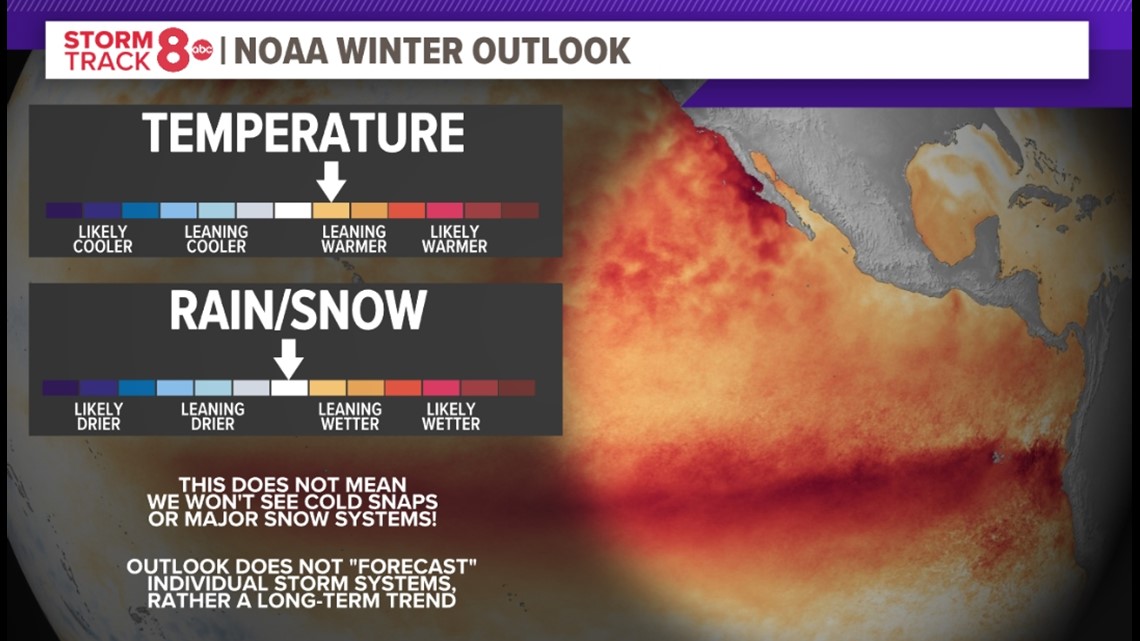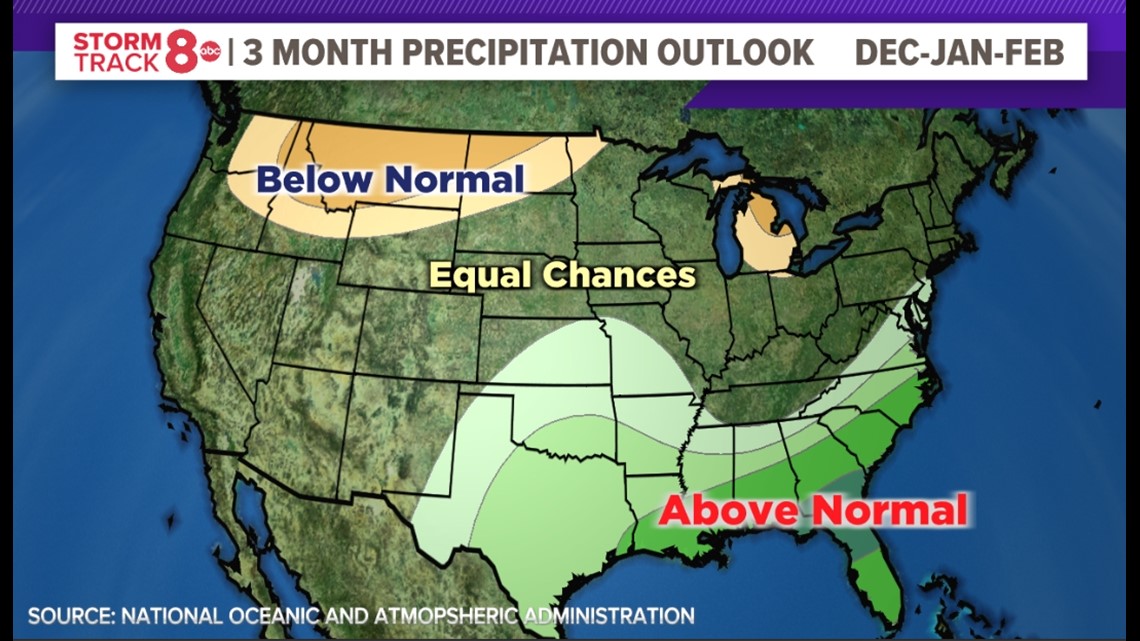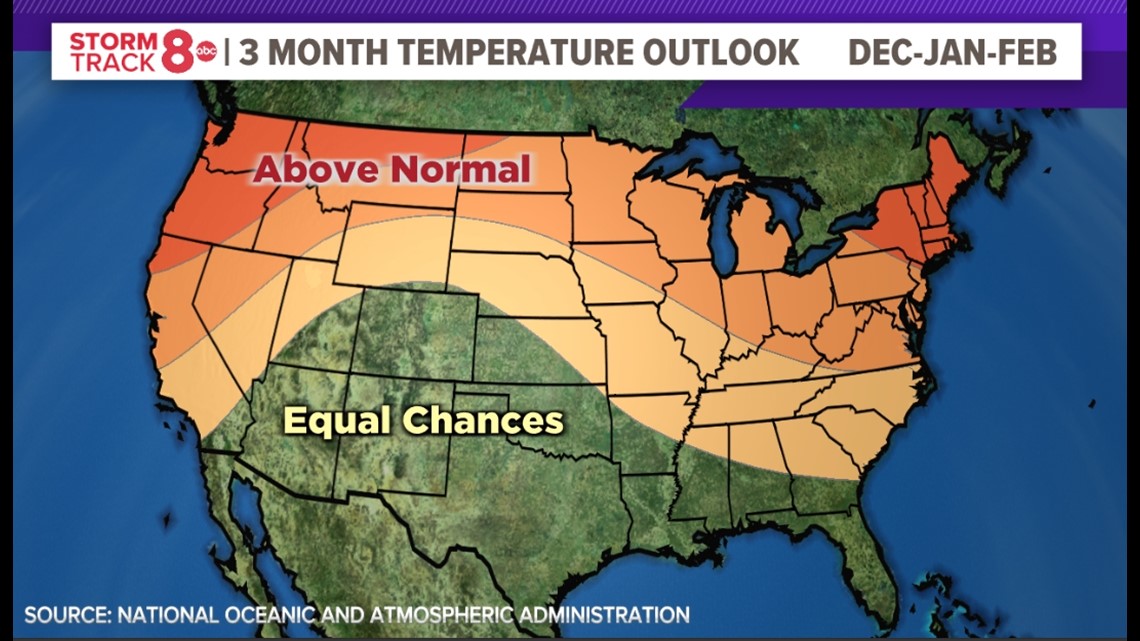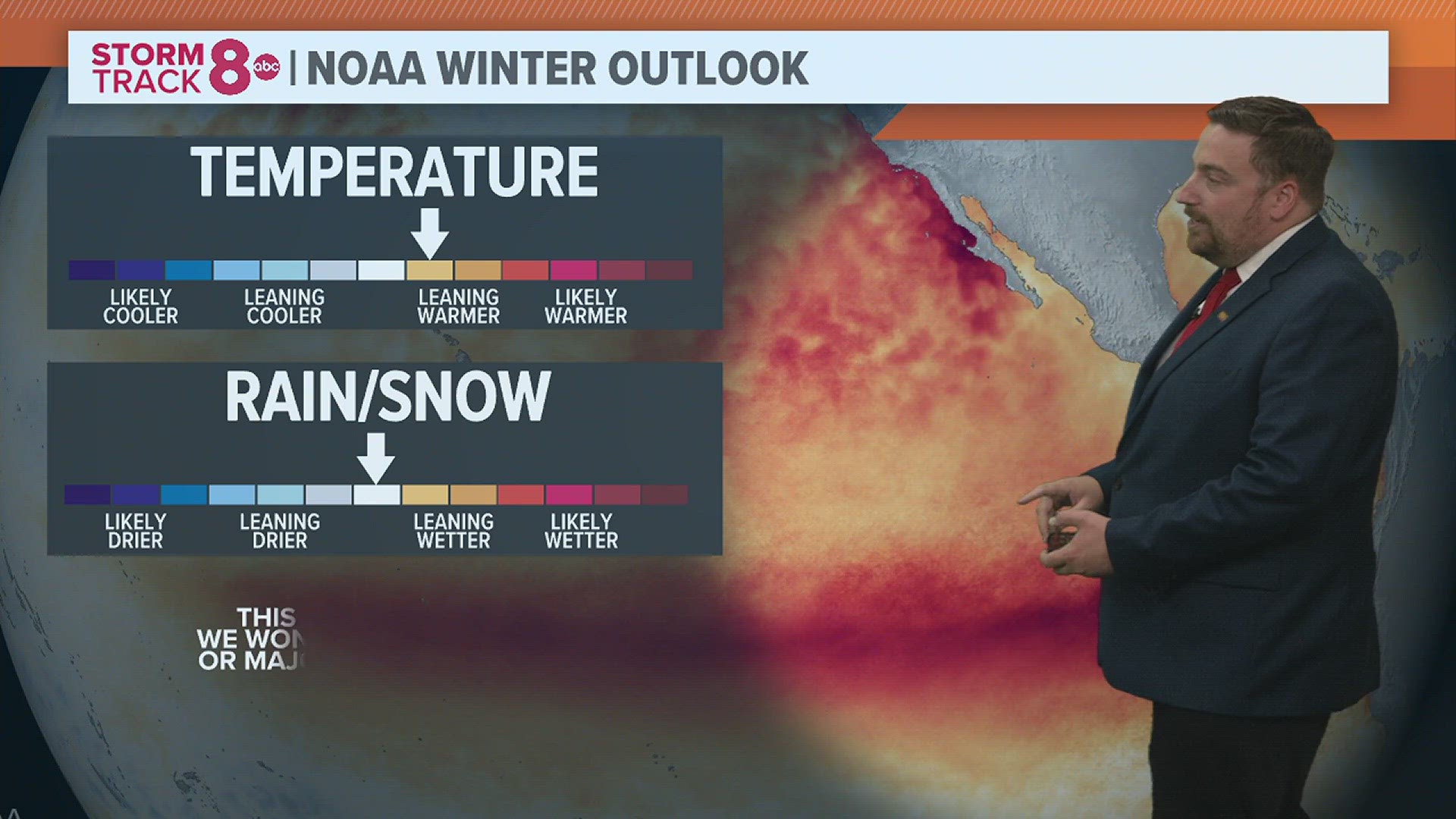DAVENPORT, Iowa — The National Oceanic and Atmospheric Administration released its long-term winter outlook on Thursday, Oct. 19, and it indicates that the Quad Cities may be trending slightly warmer.
An El Nino weather pattern is in place heading into winter for the first time in four years, which drives the outlook for warmer-than-average temperatures for the northern part of the continental United States.
So for the Quad Cities, that puts our region just 'right of center,' leaning slightly warmer as an overall trend for the season.


It is good to remember that this NOAA outlook is just that — an outlook, not a forecast. An outlook looks at long-term trends and does not forecast individual snow systems, so the "slightly warmer trend" doesn't mean that we won't see cold snaps or major snow events. Those are always a possibility!




National Outlook from NOAA:
Temperature:
- Warmer-than-average temperatures are favored across the northern tier of the U.S. and much of the Far West.
- The greatest odds for warmer-than-average conditions are in Alaska, the Pacific Northwest and northern New England.
- Near-normal seasonal mean temperatures are most likely for a region from the south-central Rockies to the southern Plains.
- Remaining areas fall into the category of equal chances for below-, near-, or above-average seasonal mean temperatures.
Precipitation
- Wetter-than-average conditions are most likely in northern Alaska, some areas of the West from parts of California to the south-central Rockies, the southern Plains, Gulf Coast, Southeast and lower mid-Atlantic.
- The greatest odds for drier-than-average conditions are forecast in portions of the northern Rockies and central Great Lakes region, especially for Michigan and northern Ohio and Indiana.
- Much of the central portion of the U.S. falls into the category of equal chances for below-, near-, or above-average seasonal total precipitation.
Drought
- Widespread extreme to exceptional drought continues to persist across much of the South, and portions of the central U.S.
- Drought conditions are expected to improve across the Southeast, the Gulf Coast (including the lower Mississippi Valley), and Texas due to the expected wetter-than-average forecast.
- Drought conditions are expected to persist for the northern Rockies, northern Great Plains, and portions of the desert Southwest this winter.
- Drought development could occur in the interior Pacific Northwest given the chance for drier-than-average conditions.
- Drought is likely to persist or develop across Hawaii.
NOAA's Climate Predication Center updates the three-month outlook each month. The next update is set to be available on Nov. 16.

